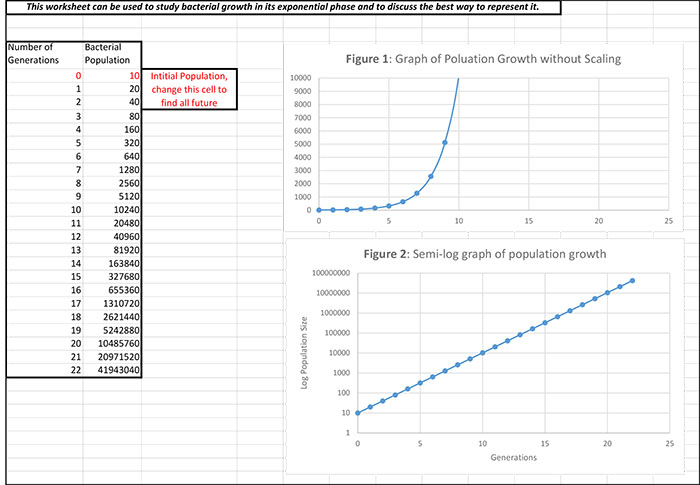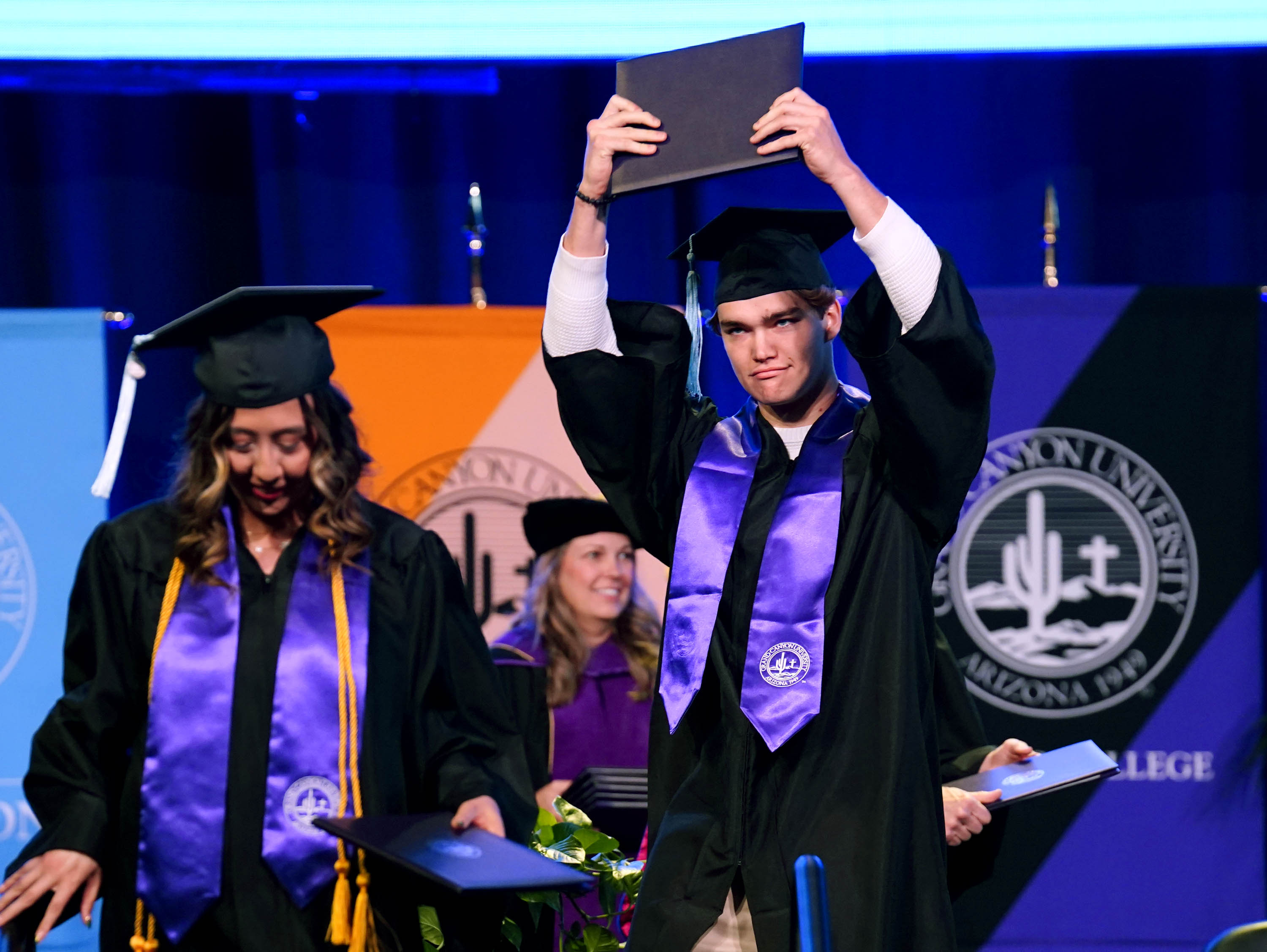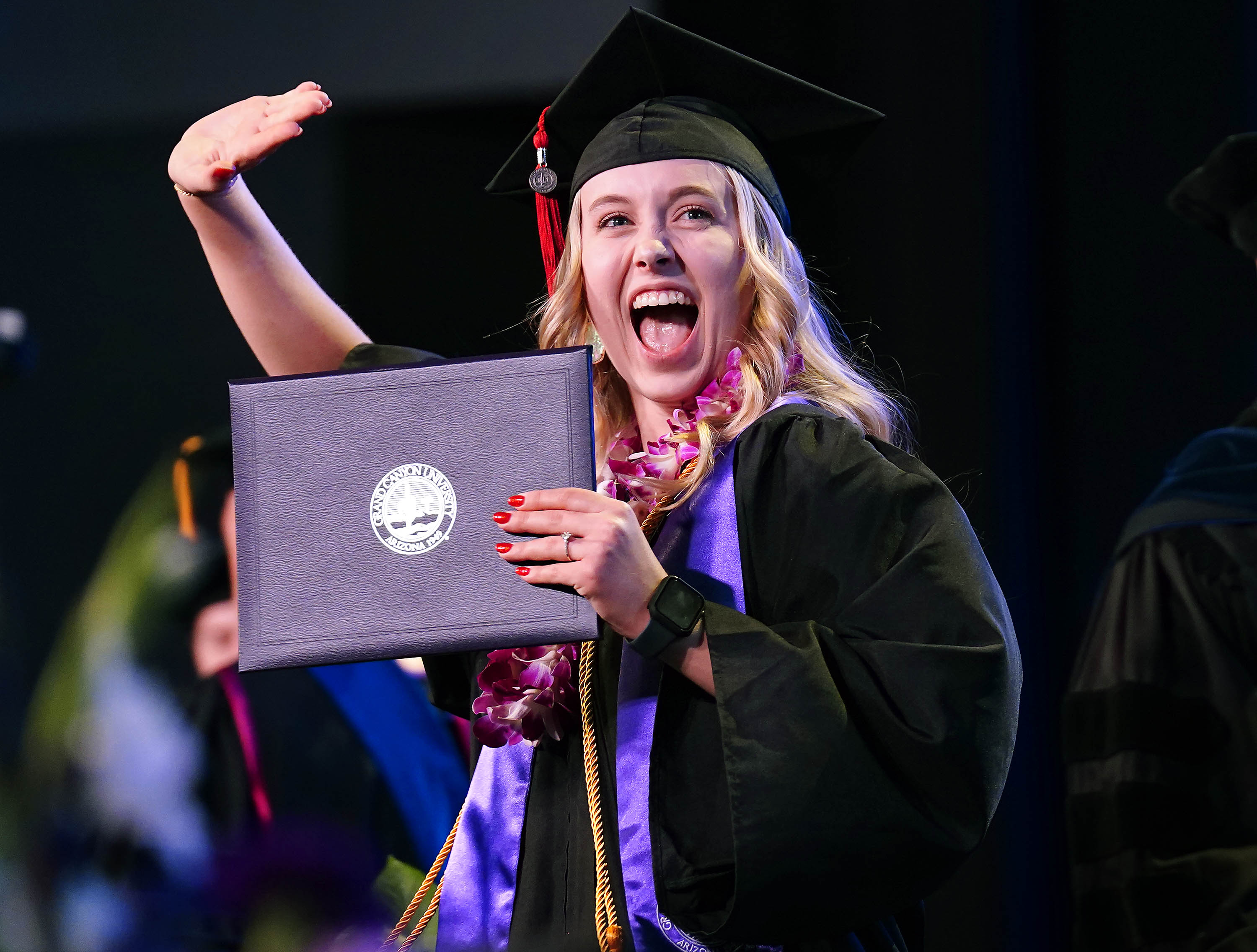
By Lana Sweeten-Shults
GCU News Bureau
Anatomy, chemistry, biology -- those disciplines make sense to students in the sciences. They sit squarely in the science comfort zone for them.
But math, on the other hand, isn’t necessarily paint by numbers for everyone.
“A lot of them, once they get into a college program that relies on math to a substantial level, if they feel they can’t perform the math, they just drop out. They can’t get through the math, and then it kind of creates a big roadblock for them,” said Grand Canyon University biology professor Dr. Galyna Kufryk, who has spent the past three years trying to knock down that roadblock.
She and GCU adjunct math professor Dr. Filippo Posta worked together to create a math guide to help her students get through the math in her microbiology courses. Three years of data have shown this integrative approach to teaching to be a great success.
“The difference between student performance is remarkable,” Kufryk said. “We saw the exam scores go up by 10.5 percent on average among the group of students that were actually using the math guide we created and proposed for them. Now we’re looking to present it to other educators.”
Kufryk and Posta presented their data, for the first time, at the Association of American Colleges & Universities conference in Atlanta earlier this month in an innovation/ideation session called “Interdisciplinary Asynchronous Integration of Math and Improvement of Student Performance in a Microbiology Course.”
“We were happy to be selected,” Kufryk said.
Their proposal received high rankings and positive comments from the peer reviewers:
- “This is a very interesting approach to address an issue almost all institutions face.”
- “A specific example of a collaborative approach by course instructors in a mathematically intensive course (microbiology) to develop just-in-time math remediation for students to use asynchronously.”
- “Lot of strengths. Tied well to research/theory, strong research questions, and I feel this could be adapted elsewhere.”
It was in the 2015-16 academic year that Kufryk noticed students were struggling with some of the math in her microbiology classes, specifically when it came to working with exponential and logarithmic functions.

“When we talk about bacterial growth, it’s described as an exponential function. That’s one part of the course where they have to be comfortable working with exponential functions,” Kufryk said.
Another part of the course deals with the efficacy of antimicrobial treatments. When students test how efficient a disinfectant might be in killing bacteria, that’s something students must describe mathematically. Students plot their results in a semi-logarithmic scale, in which the number of cells is logarithmic and time is linear.
“Students are usually struggling. By the time you need to plot something, they’re not comfortable with it. A lot of times, in their high school, for example, they would not have the lab attached to the biology course. And even if they had a lab, they did not actually have to open an Excel spreadsheet and have to plot data and make a graph. When it comes to logarithmic functions, very few students are prepared to do that.”
Kufryk decided to do something to help her students and approached Posta about creating a learning module that would target, specifically, what students need to know when it comes to exponential and logarithmic functions.
It wasn’t the first time she has taken this integrative educational approach. She also worked with Dr. Klaus Mortensen, a professor in GCU’s physics department, to come up with a learning module to help her microbiology students understand how radiation can be used to control microbial growth.
What Kufryk and Posta have done is a little different than other approaches in that it hones in on specific mathematical concepts rather than refer students to whole textbooks and “suggested reading” from those textbooks.
“By the time students come in and they see the textbook that looks that thick,” Kufryk said, her index finger and thumb 3 inches apart, “they don’t feel like that’s something they want to do. They’re thinking, 'This isn’t a math course. This is a biology course. Why do I have to start reading a math book?' Oftentimes they don’t have the time, or they kind of just shy away from it. They feel like, ‘Is this relevant?’
“What we did was create a tool that is small. It’s not overwhelming for the student. They can do it on their own, and yet it’s enough.”
The math module isn’t a requirement. It’s self-paced and something students can choose to do on their own as a refresher or as an introduction if they never have studied those mathematical concepts before.
It also is noninvasive, Kufryk said: “We are not trying to interfere with what you would like to do, but we’re offering you a tool that we see is helpful."
Students take an assessment to see where they stand with the math.
“They have the chance to identify where their weakness is and fix it and go back to study the materials that we provide. Or they can go back to the instructor, if they need, so that we can get them up to speed by the time they need it, because I offer this in class well before they actually need to use these materials,” Kufryk said.
Students follow up with another assessment to see how far they’ve progressed.
What’s beneficial about this approach is that students tackle the math module on their own time, and they can take as much time as they want so that they aren’t overwhelmed.
“Which is very good if you have a heterogeneous population of students,” Kufryk said, “because in class, if you have somebody who kind of already got it, you don’t want to be taking time to explain the concepts and then these students feel like they’re there (in class) but not gaining much.”
Kufryk and Posta have been collecting data over the course of three years. They have offered the math lessons to more than 500 microbiology students in that time, gathering feedback and adjusting the math lesson to make sure the intervention fits students’ needs.
The results have spoken loudly to the two professors.
The 10.5 percent increase, on average, on exam scores for students using the math guide shows that “the numbers do support that it has a positive impact on their exam grades.”
"The 10 percent increase was indeed a nice surprise, especially given all of the statistical analysis that we did to confirm it," said Posta.
Looking at the bigger picture, helping students get through the math could help with retention in the STEM disciplines.
“The data shows that 48 percent of students that choose to major within STEM disciplines, they’re going to switch to non-STEM or leave college without completing a degree if they’re not doing well in math,” Kufryk said.
This integrative math-science approach is a bright note, considering the Program for International Student Assessment reported in 2015 that the United States ranks 39th in math internationally, with scores being at least 62 points below the average scores of the top five performing nations: Singapore, Hong Kong, Macau, Taiwan and Japan. PISA looks at the performance of 15-year-olds in math, science and reading and releases its report every three years.
Kufryk also noted how the World Economic Forum ranked the U.S. 10th among 137 countries in 2017-18 in the quality of math and science education.
She said when she saw her students struggling with the math in her microbiology courses, she had two options -- either to gloss over the math or to teach it.
She chose to teach.
“Our goal is to make sure students are truly comprehending,” said Kufryk, and added, “The idea is to be confident in how this works.”
Contact GCU senior writer Lana Sweeten-Shults at [email protected] or at 602-639-7901.



